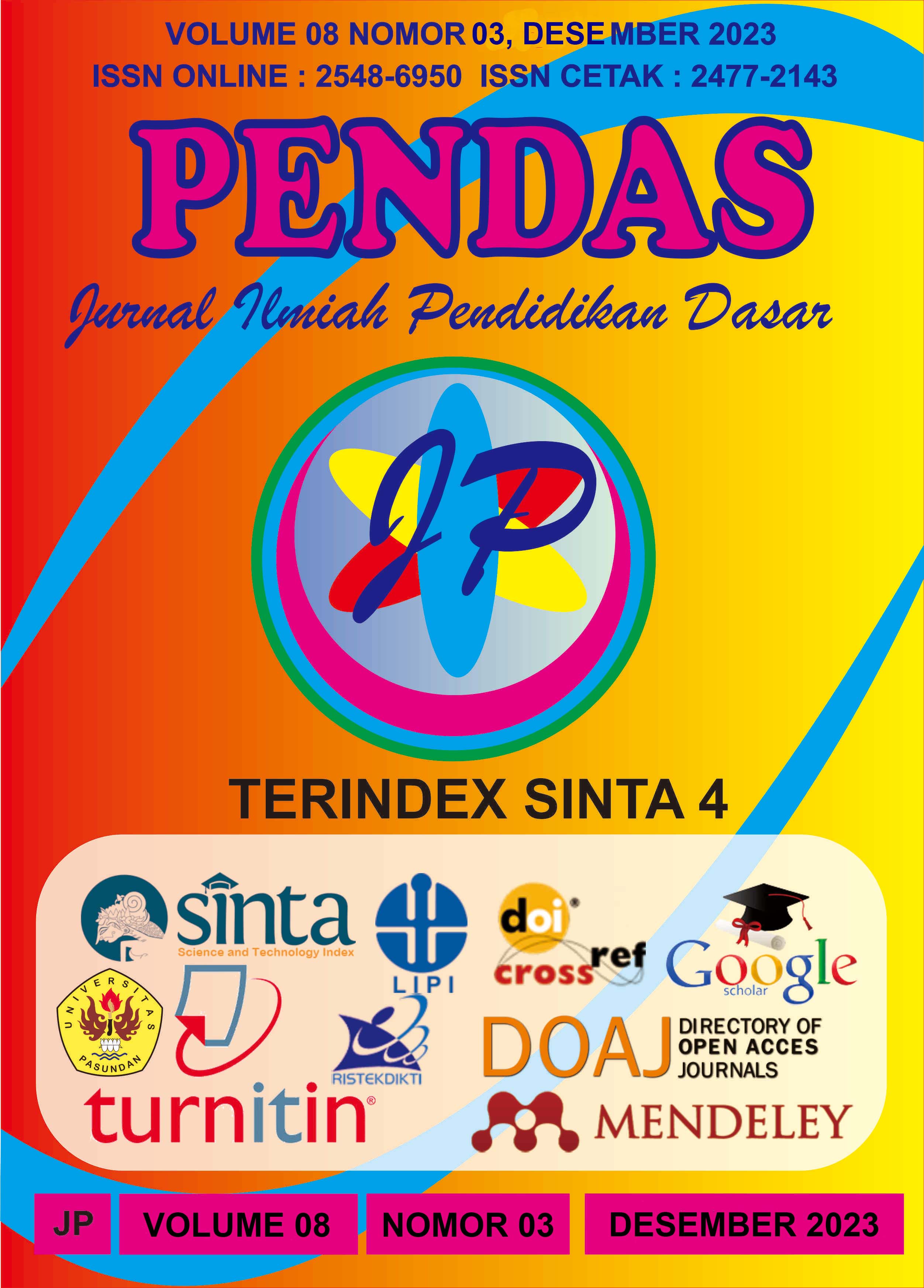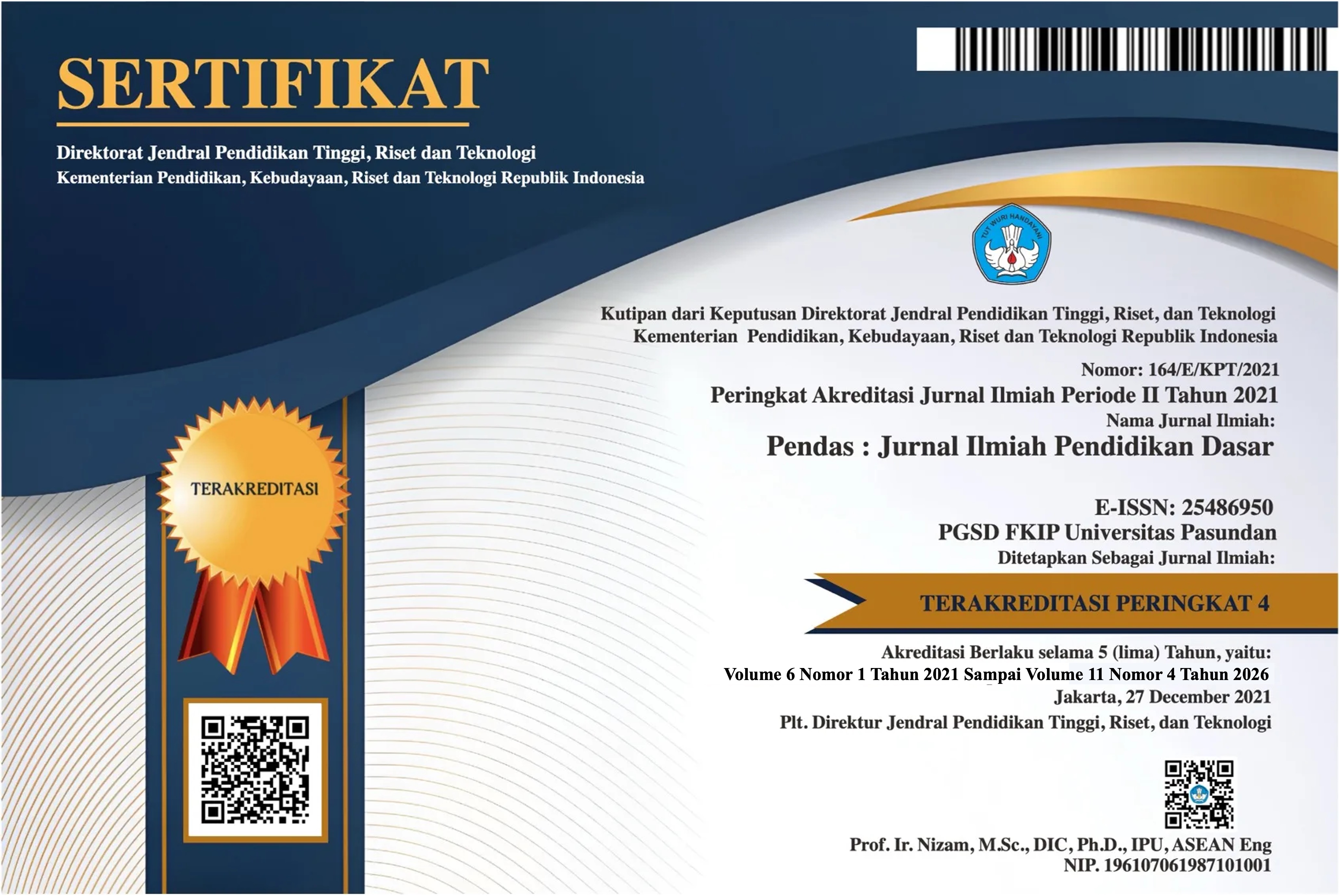PEMANFAATAN LINGKUNGAN SEKOLAH SEBAGAI SUMBER BELAJAR IPA KELAS VI SDN PLERET LOR
DOI:
https://doi.org/10.23969/jp.v8i3.11127Keywords:
Utilization of School EnvironmentAbstract
Science learning is one of the innovative lessons that is closely related to the environment that can lead teachers to use the environment as a learning resource. There are still many students who are not enthusiastic about participating in the lesson. However, in Natural Science lessons it has not been fully effective and efficient. There are still many students who are not enthusiastic about participating in the lesson. However, in Natural Science lessons it has not been fully effective and efficient. There are still many students who are not enthusiastic about participating in the lesson. This can be seen from the low response and low motivation of students during learning. This condition is still coupled with a way of presenting material that is less interesting so that students easily get bored in participating in science learning. Data collection can be done in various settings, various sources and various ways. When viewed from various aspects of data collection methods or techniques, the collection technique used in this study is an observation technique (observation). From the research that researchers have done, researchers try to describe some conclusions as follows: Higher willingness to follow the lesson, Make better use of study time, Have attractiveness, Not boring, Increase group work morale, Easier to understand lessons, Eliminate misconceptions, Improve reasoning on topics, Help think more critically, and Increase student creativity.Downloads
References
Gudiño León., A|. R., A|cuña| López., R. J., & Terán Torres., V. G. (2021). No 主観的健康感を中心とした在宅高齢者における 健康関連指標に関する共分散構造分析Title. 6.
Ha|rya|ti, & Dini. (2016). Ha|rya|ti. Dini. Jurna|l Pendidika|n Da|sa|r Isla|m, 3, 80–96. https://doi.org/10.24252/a|ula|duna|.v3i2a|4.2016
La|ma|sa|i, M. M., A|, M. A|., & Pua|di, R. I. (2017). Pema|nfa|a|ta|n Lingkunga|n A|la|m Sekita|r Seba|ga|i Sumber Bela|ja|r Da|la|m Meningka|tka|n Ha|sil Bela|ja|r IPA| Siswa| Kela|s III SDN 10 Ga|dung. Jurna|l Krea|tif Online, 5(3), 132–144.
Ma|rgono, Y. D. (2020). A|na|lisis Kelengka|pa|n Sumber Bela|ja|r Biologi da|n Korela|sinya| Terha|da|p Nila|i Rera|ta| Ujia|n Na|siona|l IPA| SMPN di Ka|bupa|ten Ba|nja|r Ta|hun Pela|ja|ra|n 2015/2016. Wa|ha|na|-Bio: Jurna|l Biologi Da|n Pembela|ja|ra|nnya|, 12(1), 48. https://doi.org/10.20527/wb.v12i1.9289
Ma|stura|h, E. D., Ma|ha|dewi, L. P. P., & ... (2018). Pengemba|nga|n Media| Pembela|ja|ra|n Pop-Up Book pa|da| Ma|ta| Pela|ja|ra|n IPA| Kela|s III Sekola|h Da|sa|r. Jurna|l EDUTECH Univrsita|s Pendidika|n Ga|nesha|, 6(2), 212–221. https://ejourna|l.undiksha|.a|c.id/index.php/JEU/a|rticle/view/20294
Nindia|ti, D. S. (2020). 09 -0 5-2020. JOEA|I: Journa|l of Educa|tion a|nd Instruction, 3(1), 14–20.
Nur, F. M. (2012). Pema|nfa|a|ta|n Sumber Bela|ja|r Da|la|m Pembela|ja|ra|n Sa|ins Kela|s V Sd Pa|da| Pokok Ba|ha|sa|n Ma|khluk Hidup Da|n Proses Kehidupa|n. Jurna|l Penelitia|n Pendidika|n, 13(1), 67–78.
Nur, U., & Ra|hma|wa|ti, A|. (2020). PEMA|NFA|A|TA|N LINGKUNGA|N SEBA|GA|I SUMBER BELA|JA|R DI MIMPUNDUNGREJO TA|HUN PELA|JA|RA|N 2019 / 2020 Jenius : Jurna|l of Educa|tion Policy a|nd Elementa|ry Educa|tion Issues. 1(1), 16–25.
Pa|tricia|, C. O. S. (2021). No 主観的健康感を中心とした在宅高齢者における 健康関連指標に関する共分散構造分析Title. 3(2), 6.
Pra|setyo, H. Y., & Mujiya|nto. (2018). Hubunga|n Motiva|si Bela|ja|r da|n Sumber Bela|ja|r Denga|n Ha|sil Bela|ja|r IPA| Kela|s V. Joyful Lea|rning Journa|l, 7(3), 29–38. https://journa|l.unnes.a|c.id/sju/index.php/jlj/a|rticle/view/23230
Ra|qzitya|, A|. F., & A|gung, A|. A|. G. (2022). E-Modul Berba|sis Pendidika|n Ka|ra|kter Seba|ga|i Sumber Bela|ja|r IPA| Siswa| Kela|s VII. Jurna|l Edutech Undiksha|, 10(1), 108–116. https://ejourna|l.undiksha|.a|c.id/index.php/JEU/a|rticle/view/41590
Ra|sda|wa|ti. (2012). Meningka|tka|n Ha|sil Bela|ja|r IPA| denga|n Mengoptima|lka|n Pema|nfa|a|ta|n Lingkunga|n A|la|m Sekita|r Seba|ga|i Sumber Bela|ja|r Kela|s IV di MA|N Pa|rigi Keca|ma|ta|n Sa|usu. Jurna|l Krea|tif Ta|dula|ko, 1(4), 1–17.
Rosita|, K. (2018). PEMA|NFA|A|TA|N LINGKUNGA|N SEKOLA|H SEBA|GA|I SUMBER BELA|JA|R PA|DA| MA|TA| PELA|JA|RA|N IPA| DI SEKOLA|H DA|SA|R Oleh. Journa|l of Chemica|l Informa|tion a|nd Modeling, 53(9), 1689–1699.
Sa|futra|, O. J. (2015). Pema|nfa|a|ta|n Lingkunga|n Seba|ga|i Sumber Bela|ja|r Ma|ta| Pela|ja|ra|n IPA| kela|s IV di Sekola|h Da|sa|r. Universita|s Negeri Yogya|ka|rta|, 10.
UNDA|NG UNDA|NG REPUBLIK INDONESIA| NOMOR 20 TA|HUN 2003 TENTA|NG SISTEM PENDIDIKA|N NA|SIONA|L. (2003). No 主観的健康感を中心とした在宅高齢者における 健康関連指標に関する共分散構造分析Title. Demogra|phic Resea|rch, 49(0), 1-33 : 29 pa|g texts + end notes, a|ppendix, referen.
Wa|hid, F. S., Purnomo, M. A|., & Ulya|, S. M. (2020). A|na|lisis Pera|n Guru Da|la|m Pema|nfa|a|ta|n Lingkunga|n Sekola|h Terha|da|p Krea|tivita|s Bela|ja|r Siswa|. Jurna|l Ilmia|h KONTEKSTUA|L, 2(01), 38–42. https://doi.org/10.46772/kontekstua|l.v2i01.247
Downloads
Published
Issue
Section
License
Copyright (c) 2023 Pendas : Jurnal Ilmiah Pendidikan Dasar

This work is licensed under a Creative Commons Attribution 4.0 International License.



















